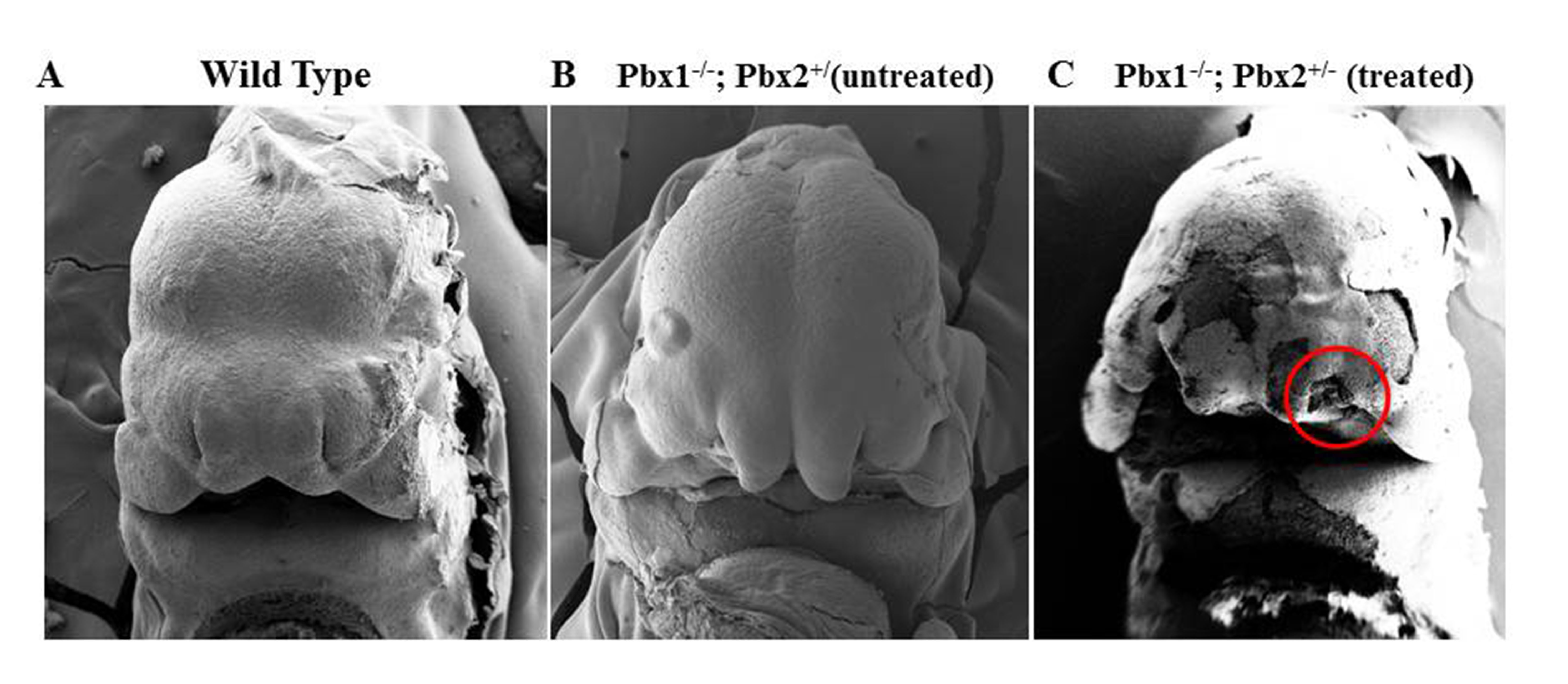|
|
|
|
|
Back to 2016 Annual Meeting
Ex utero Repair of the Cleft Lip/ Palate Deformity Using a Collagen Microsphere Drug Delivery System
Xue Dong, BA1, Wilmina N. Landford, BA1, James James Hart, DVM1, Elisabetta Ferretti, PhD2, Peipei Zhang, MD, PhD1, Kerry A. Morrison, BA1, Licia Selleri, MD, PhD3, Jason A. Spector, MD, FACS1.
1Weill Cornell Medical College, New York, NY, USA, 2University of Copenhagen, Copenhagen, Denmark, 3UCSF School of Dentistry, San Francisco, CA, USA.
Background: Cleft Lip with or without Palate (CL/P) affects approximately 1 in 500-700 live births, representing the most common congenital craniofacial anomaly. We previously developed a unique compound Pbx-deficient murine model with fully penetrant CLP and demonstrated genetic rescue strategies to reconstitute Wnt signaling and correct midface clefting. In order to investigate the possibility of tissue repair at an early gestational age, we developed a minimally invasive surgical approach for cleft repair suitable for intrauterine repair using Wnt-soaked collagen microspheres to restore craniofacial developmental programs. Methods: Wildtype and Pbx-deficient viable murine embryos were dissected out of the uterus, yolk sac, and amnion pierced open, and the embryos placed in a 37°C modified Whole Embryo Culture (WEC) system. We then fabricated collagen microspheres out of 1% neutralized type I collagen via a double emulsion technique that would serve as a delivery vehicle for Wnt. At gestation day E11.5, collagen microspheres soaked in murine purified Wnt9b protein were microsurgically implanted at the midface lambdoidal (λ)-junction of wildtype and Pbx-compound mutant embryos. Correction of CLP was assessed by gross morphology, histology, and evaluation of the restoration of apoptotic programs. Furthermore, titration assays were conducted to optimize the dose of Wnt by assessing protein content and release kinetics from the microspheres with regard to space and time. Results: Preliminary results demonstrate that embryos continue to develop normally in this “artificial uterus” for 24 hours, as evidenced by normal facial development in cultured embryos. Targeted release of Wnt9b by our microspheres was demonstrated by increased X-gal staining around the implant when placed in areas where minimal Wnt activity would be expected (e.g. cranium). Microsphere implantation at the λ-junction resulted in locally augmented Wnt expression. More importantly, microsurgical implantation of Wnt soaked microspheres resulted in cleft correction in 24.7% of the Pbx-deficient embryos (p<0.05) (an area ratio decrease of more than 50% of clefting on the implanted side when compared to the untreated contralateral side was considered “rescued”) (Figure, red circle). Blank microspheres implanted at the λ-junction did not affect the rate of clefting. Conclusion: Ex utero correction of CLP in our murine model via microsurgical intervention and targeted delivery of Wnt is a promising and innovative strategy. We believe this approach may open new avenues towards unconventional and innovative prenatal interventions for patients with CL/P as well as provide future pre-natal repair approaches for other congenital head and neck disorders.

Back to 2016 Annual Meeting
|
|
